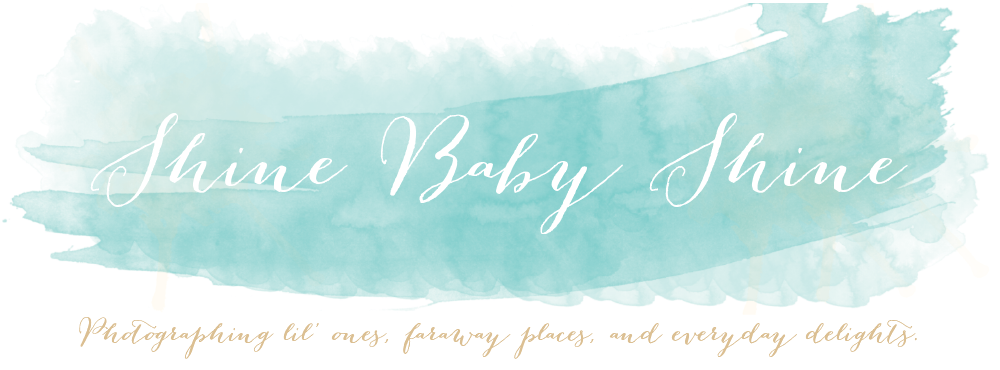Inevitably the more I learn about photography, the more I develop a desire to buy new photography gear. So far I've mostly held off, but one thing I have bought is a new lens (Sigma 35mm f/1.4). It allows me to shoot at much larger apertures (i.e. lower Fstop numbers), which can be advantageous in two ways. Larger apertures can be helpful when taking pictures in low light because the lens opening is wider. But more importantly, shooting wide open (i.e. larger apertures) can allow you to create those dreamy shots where the subject is in focus with a hazy background (in photography terms this is called "bokeh"). If you only have the kit lens that came with your DSLR it can be hard to achieve this look.
So far, so good? Well, not quite. After returning from a divine vacation in the Dominican Republic and taking a closer look at the pictures taken with my brand new lens, I noticed something. Disappointingly, the focus was off in many of the pictures taken at these large apertures.
Look at the photo below taken in the early morning light (side note: Maelle thought 6:15 a.m. was a good time to wake up on vacation, so I decided to make the best of it and take some pictures). At first glance it looks okay but if you look closer you can see how much sharper the grass is than Maelle's face. Not exactly the look I was going for.
Likewise instead of Maelle's eyes being in super sharp focus, I ended up with a super sharp button in the photo below.
Since then I've learned that it can be very difficult to nail the focus when shooting at large apertures. It's therefore important to ask yourself if this aperture really is the best choice. Also, the depth of focus can be less than a centimetre at large apertures so if your camera is set to Automatic Auto focus selection (which mine was) there is a good chance your focus will be off. In this mode the camera will focus on the nearest subject with adequate contrast to one of the focal points (which may or may not be what you want to be in focus).
I now try to manually select my Autofocus (AF) point, forcing the camera to focus where I want it to. There are two basic ways to do this: the focus-recompose method (select the centre focal point, press the shutter button halfway down to lock the focus and then recompose the shot) or select the focal point closest to your subject. Here are two additional articles that you may find helpful:
Changing Your Focal Point
Many People Use All Focus Points on Their DSLR, Learn to Break the Mould!
How do you know if your focus is spot on? After you've taken a photo review it on the playback mode and zoom in on the eyes (they should be sharp). It can be pretty tough to see the focus accurately just be looking at the image at full size.
It can still be a challenge to get the focus tack sharp (since shutter speed, camera shake and lens quality all impact sharpness), but I'm noticing positive results when I take control over my camera's focus.
So far, so good? Well, not quite. After returning from a divine vacation in the Dominican Republic and taking a closer look at the pictures taken with my brand new lens, I noticed something. Disappointingly, the focus was off in many of the pictures taken at these large apertures.
Look at the photo below taken in the early morning light (side note: Maelle thought 6:15 a.m. was a good time to wake up on vacation, so I decided to make the best of it and take some pictures). At first glance it looks okay but if you look closer you can see how much sharper the grass is than Maelle's face. Not exactly the look I was going for.
Since then I've learned that it can be very difficult to nail the focus when shooting at large apertures. It's therefore important to ask yourself if this aperture really is the best choice. Also, the depth of focus can be less than a centimetre at large apertures so if your camera is set to Automatic Auto focus selection (which mine was) there is a good chance your focus will be off. In this mode the camera will focus on the nearest subject with adequate contrast to one of the focal points (which may or may not be what you want to be in focus).
I now try to manually select my Autofocus (AF) point, forcing the camera to focus where I want it to. There are two basic ways to do this: the focus-recompose method (select the centre focal point, press the shutter button halfway down to lock the focus and then recompose the shot) or select the focal point closest to your subject. Here are two additional articles that you may find helpful:
Changing Your Focal Point
Many People Use All Focus Points on Their DSLR, Learn to Break the Mould!
How do you know if your focus is spot on? After you've taken a photo review it on the playback mode and zoom in on the eyes (they should be sharp). It can be pretty tough to see the focus accurately just be looking at the image at full size.
It can still be a challenge to get the focus tack sharp (since shutter speed, camera shake and lens quality all impact sharpness), but I'm noticing positive results when I take control over my camera's focus.






No comments:
Post a Comment